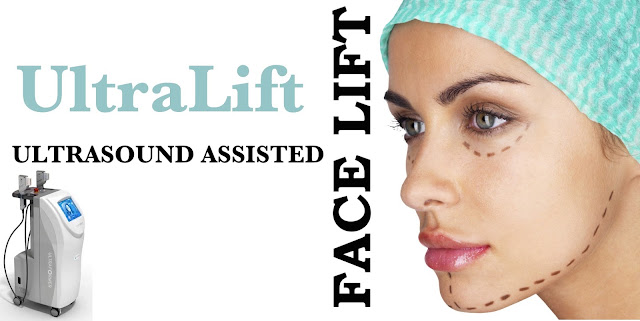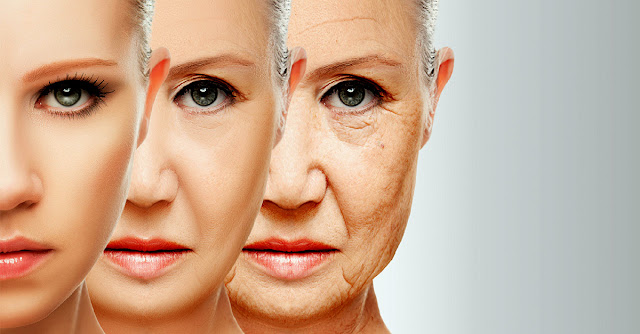Thanks
to a steady diet of lasers, lights, RF, and needles, middle-aged celebs have
been defying aging with legitimate denials of surgical interventions. How do they stay so youthful and fresh
beyond their years is not a big SECRET anymore — Forget diamonds a
dermatologist is a celeb’s best friend these days!
Talking
about secrets — minimally invasive, no downtime, lunch-time procedures are what
A-list celebs are relaying on these days to maintain their youthful image and
skin. These are real exciting times for anti-aging medicine, the modern day
anti-aging experts are armed, ready, and able to deliver revolutionary yet
natural results — knives are being shelved and instead cutting edge devices are
emerging as new youth dispensing heros. One such technology generating the
loudest buzz in A-List anti-aging circles is: high intensity focused Ultrasound
waves (HIFU to be more precise) — sound waves whispering youth into the aging skin
(literally).
Yup,
ultrasound facials my youthistas are the latest trend in lunch-hour high-tech treatments.,
these sessions comes with a solemn promise (backed by medical studies) to wipe
years off of any visage with zero down time. The unique Ultralift (ultrasound
assisted facelift) tightens the skin as well as the deeper support layer below
it, without cutting or disrupting the surface of the skin. Rumored to be a
favorite of Courtney Cox this technology holds the strongest promise yet to
reduce fine lines, firm sagging skin and tackle open pores and pigmentation
marks.
Let’s You Up Close &
Personal With The UltraLift
The
UltraLift is a non-surgical face, neck and body treatment that uses ultrasound
to actually lift and tone loose skin without any downtime. It is a truly revolutionary
treatment that can specifically target the SMAS; the deep foundation below the
skin that is addressed during facelift surgery without cutting or disrupting
the surface of the skin.
Here
are some questions that most people want to know about this latest nonsurgical
facelift, before they consider test-driving the procedure personally.
How is The UltraLift
different from Lasers and Radiofrequency technologies?
Lasers
and RF technologies typically address issues in the superficial layers of the
skin (e.g. fine lines, wrinkles, pigment changes). The focused ultrasound
technology can address the skin as well as the deeper layer called SMAS, which
makes the foundational muscle layer that drapes and lends support to the skin. The
UltraLift therefore can provide more powerful lifting effect when compared to
other technologies. Lasers in particular target pigment tissue of skin making
some treatments in skin of color a little risky. Ultrasound on the other hand
is not absorbed by the pigment elements of skin allowing treatments for even
darker skin types more safely without any pigmentation related side effects
Who is a good candidate for
The UltraLift?
A
good candidate for The UltraLift is someone with early to medium signs of aging
someone with skin that feels less firm and looks sagging. A lowered brow line
or sagging skin on the eyelids, for instance, is often the first sign of
"aging", ill-defined jaw-line with hanging jowls, deepening
marionette lines and laugh lines and sagging cheeks can all be addressed with
Ultralift. While The Ultralift is not a replacement for surgery, there are many
people who want some lifting but are not ready for surgery either mentally,
financially or logistically.
What To Expect After The UltraLift
Treatment?
Immediately
after the procedure there is mild redness and swelling which subsides in few
hours. Most people enjoy this edema as an initial lifting effect, but the
ultimate lifting and toning takes place over the next 2-3 months, as tired and
damaged collagen is renewed and replaced with new and stronger collagen. When
eye area is treated it takes 3-7 days for the swelling to subside.
Is there any downtime with
The UltraLift treatment?
With
UltraLift, there is no downtime, most people are able to return to their normal
activities right away, and no special measures are needed. It also can be
carried out at any time of the year with no restrictions, with regard to sun
exposure.
Will I feel the ultrasound
during the treatment?
Yes.
What you are feeling during the treatment is actually tiny amounts of
concentrated ultrasound energy (micro coagulation zones) being deposited below
the surface of the skin. While treating bony areas (jawline, cheek bones, bony
area above eyes) there can be some discomfort while the energy is being
delivered, but it is temporary and a positive signal that the collagen-building
process has been initiated.
Remembering Thermage — Is The UtraLift painful?
Usually
a numbing cream is applied half an hour before the procedure, which makes the
procedure relatively painless. Some people feel no discomfort at all, on the
other hand some people who are more sensitive with very low pain threshold feel
the procedure is uncomfortable but tolerable. In such sensitive cases oral
ibuprofen or a nerve block might be used to make the procedure more acceptable.
My personal experience — patients typically leave comfortable and excited about
the benefits to come.
Are there any side effects?
There
may be slight redness for up to an hour or so following the treatment, and a
small percentage of people may have slight swelling, tingling or tenderness to
touch, but these are mild and temporary in nature. There is always the
possibility for other less common post-procedural effects, which your doctor will
review with you in detail before the procedure.
How long does it take to
perform The UltraLift?
A
full face-and-neck treatment takes approximately 60 minutes, and a partial face
treatment can take around 30-minutes.
What will my skin feel like
after the procedure?
Immediately
following the UltraLift procedure your skin should feel tighter, smoother and
more youthful. Over time (2-3 months) you may notice additional tightening. The
most frequently reported incidents are as follows and they all resolve within a
few days of treatment:
·
Redness
·
Swelling
·
Tingling of the skin
·
Tenderness
·
Bruising
What areas can be treated
with UltraLift?
The
UltraLift is perfect for tightening and lifting the skin on the neck, under the
chin, the jawline, the brow, around the eyes, and treating wrinkling and
sagging on the décolletage and body (areas of which that can be targeted
include: chest, arms, armpits, abdomen, flanks, thighs and lower legs).
How long before I can return
to my normal activities?
Most
people can return to their regular activities immediately following the UltraLift
procedure. You should avoid exposing your skin to extremes of heat and cold and
protect your skin with a sun block cream. Your normal makeup regime can be
followed immediately.
Important Question Everyone Is Thinking About -
Is The UltraLift safe?
After
demonstrating safety in clinical studies, the device and the procedure have been
cleared by the U.S FDA. Tens of thousands of treatments have been performed
worldwide without any significant adverse events. In addition, ultrasound
energy has a proven track record, with use in the field of medicine for more
than 50 years, including pregnancy scans.



